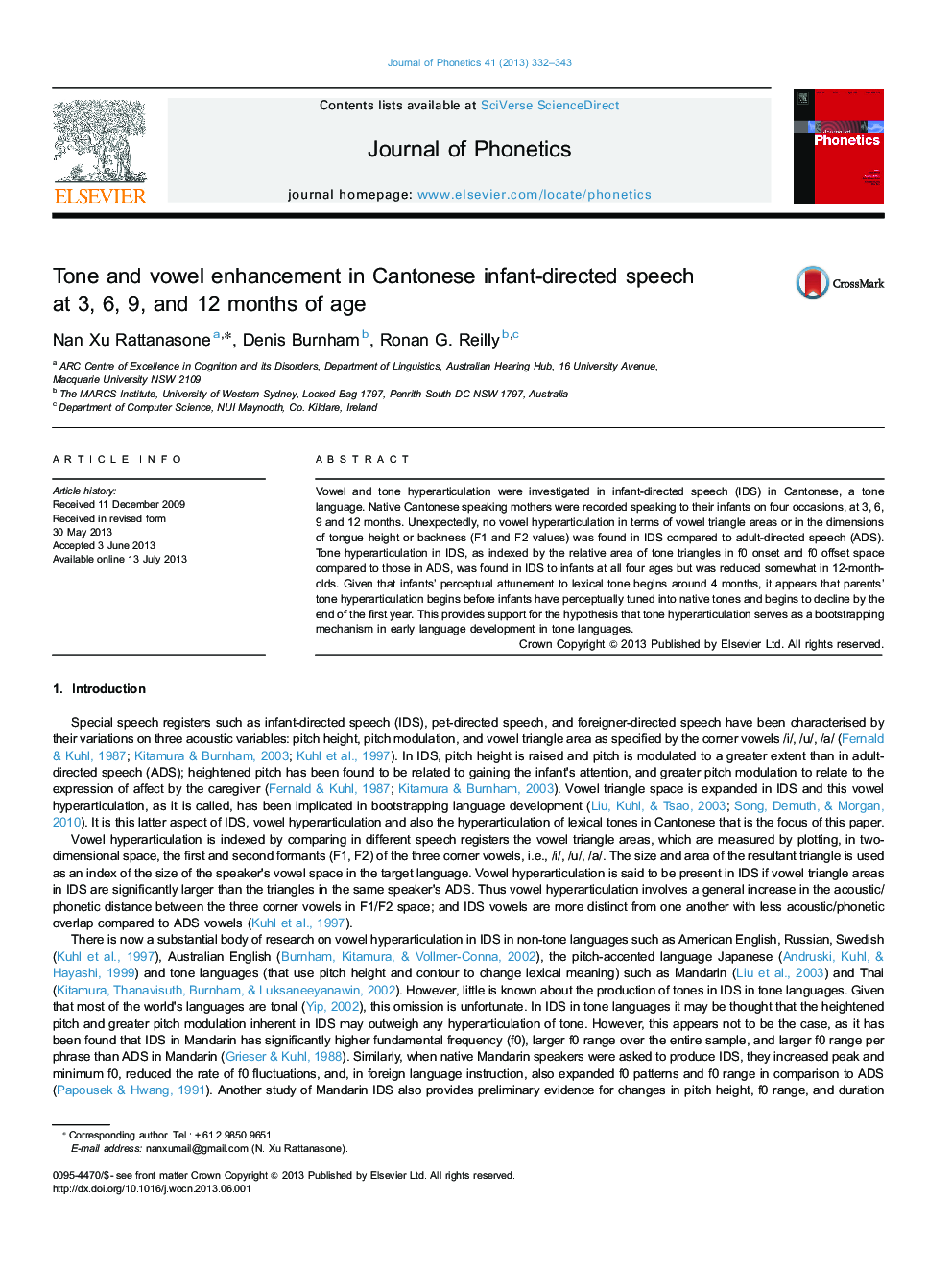| Article ID | Journal | Published Year | Pages | File Type |
|---|---|---|---|---|
| 1100891 | Journal of Phonetics | 2013 | 12 Pages |
•Tone and vowel in Cantonese infant-directed speech (IDS) to 3-, 6-, 9-, & 12-month-olds were examined.•Tone hyperarticulation (indexed by f0 onset/offset triangle area) was found across IDS ages.•Enhancements for height and width of the tone space, and general upward pitch displacement were found.•Despite the general upward shift in pitch, there is enhanced pitch range and tone differentiation in IDS.•These modulations may be a mechanism for bootstrapping language development in tone languages.
Vowel and tone hyperarticulation were investigated in infant-directed speech (IDS) in Cantonese, a tone language. Native Cantonese speaking mothers were recorded speaking to their infants on four occasions, at 3, 6, 9 and 12 months. Unexpectedly, no vowel hyperarticulation in terms of vowel triangle areas or in the dimensions of tongue height or backness (F1 and F2 values) was found in IDS compared to adult-directed speech (ADS). Tone hyperarticulation in IDS, as indexed by the relative area of tone triangles in f0 onset and f0 offset space compared to those in ADS, was found in IDS to infants at all four ages but was reduced somewhat in 12-month-olds. Given that infants’ perceptual attunement to lexical tone begins around 4 months, it appears that parents’ tone hyperarticulation begins before infants have perceptually tuned into native tones and begins to decline by the end of the first year. This provides support for the hypothesis that tone hyperarticulation serves as a bootstrapping mechanism in early language development in tone languages.
